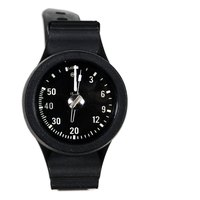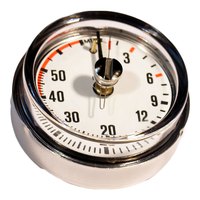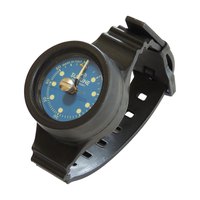Instruments Depth gauges
()Sort by
-

Aqualung NS114114 60 m Depth Gauge
62 €
-

Cressi EKZ760504 70 m Depth Gauge
77.99 €
-

Aqualung Depth Gauge Wrist 200´
99 €
-

Scubapro Analogic Depth Gauge Capsule
84.49 €
-

Scubapro Analogic Depth Gauge
99.49 €
-

Scubapro Depth Gauge Capsule U-Line 04 Ca M
69.99 €
-

Tecnomar Militar Depth Gauge 70 m
64.49 €
-

Scubapro Digital Depth Gauge
186.99 €
-

Scubapro Digital Depth Gauge Capsule
170.99 €
-

Aqualung NS114137 60 m Depth Gauge
74.49 €
-

Metalsub Replacement Capsule For Pacific
45.99 €
-

Metalsub Wrist 70 m Depth Gauge
53.49 €
-

Suunto SM-16/45 Depth Gauge
95.99 €
-

Tecnomar DOT Depth Gauge
67.99 €
-

Tecnomar DOT Depth Gauge
67.99 €
-

Aquatys Depth Gauge
93.99 €
How to choose a depth monitoring device for scuba diving?
Depth gauges for scuba diving permit you to detect depth, and in respective, maximum depth. This gauge is usually utilized with a watch and repose tables to enable divers to monitor decompression necessities. Digital depth gauges can also display the incline rate to assure that you remain within the safe limitations.Most current diving depth gauges have an electronic system and digital presentation. Analog depth gauges are also used nowadays. Digital depth gauges operated by divers generally also contain a timer indicating the gap of time that the diver has been immersed. Some indicate the diver´s speed of incline and descent, which can be beneficial for evading barotrauma. This combination device is also called a base timer. An electronic depth gauge is an important part of a dive computer. You can buy these depth gauges for scuba diving from these brands: Cressi, Aqualung, Suunto, Metalsub, and Tecnomar.
Tips to choose a depth monitoring device for scuba diving
When choosing a depth monitoring device for scuba diving, also known as a depth gauge or depth monitor, there are several factors to consider. Here are some guidelines to help you make an informed decision:
Accuracy and Reliability: Accuracy is paramount when it comes to depth monitoring devices. Look for devices that have a reputation for providing precise depth readings. Consider devices that are known for their reliability and consistency in various diving conditions.
Display: The display should be easy to read and understand underwater. Choose a depth monitoring device with clear, large, and high contrast digits or markings. Make sure the display is designed to be easily visible in low light conditions or murky water.
Units of Measurement: Determine whether you prefer depth measurements in feet or meters. Ensure the device you choose displays measurements in your preferred unit.
Mounting Options: Consider how you want to attach the depth monitoring device to your gear. Some devices can be wrist mounted, while others can be console mounted or integrated into your dive computer. Choose a mounting option that suits your preference and is compatible with your existing gear setup.
Durability and Water Resistance: Depth monitoring devices need to withstand the rigors of diving. Look for devices that are built to be durable and resistant to water pressure. Consider devices that are made with corrosion resistant materials and have proper sealing to prevent water ingress.
Glow in the Dark or Backlit Display: If you often dive in low light conditions or at night, consider a depth monitoring device with a glow in the dark display or a backlit display. These features enhance visibility and readability in darker environments.
Ease of Use: Consider the user interface and ease of operation. Look for devices with intuitive controls that are easy to navigate, even while wearing gloves.
Compatibility: If you already own a dive computer or other diving equipment, ensure the depth monitoring device is compatible with your existing gear. Consider devices that can be easily integrated or connected to other devices for a comprehensive diving setup.

























